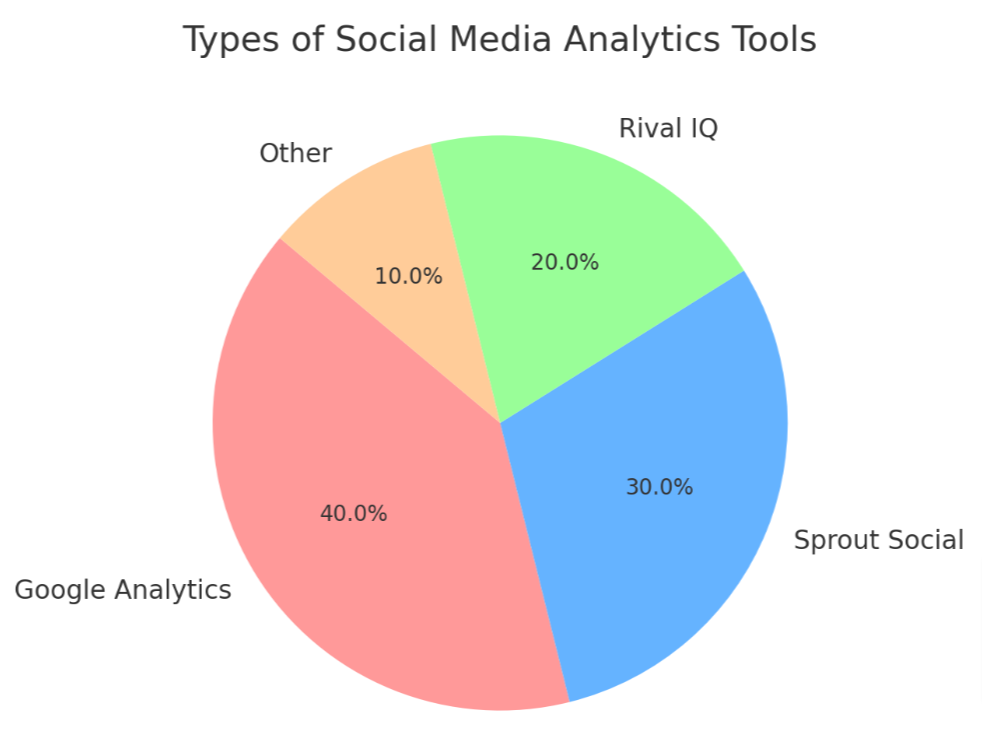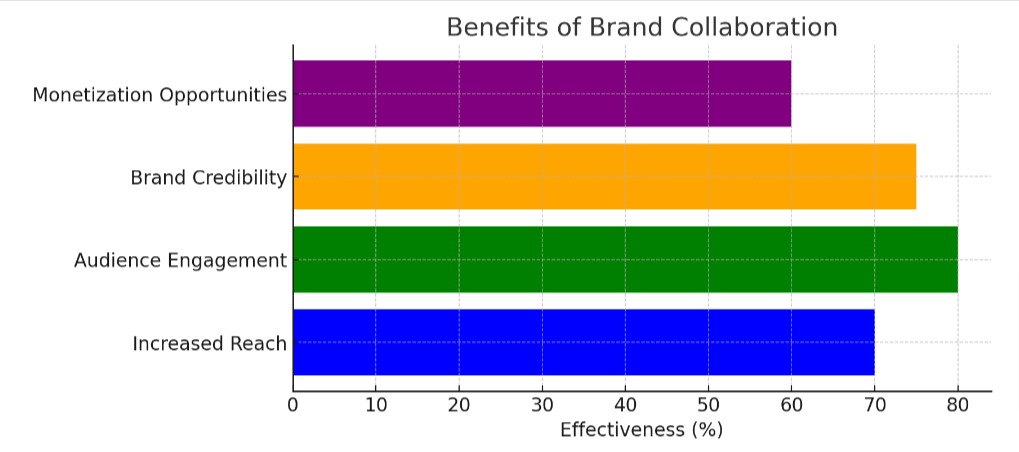Strategic Brand Collaborations for Social Media Review Writers
Struggling to get noticed on social media? One in every three businesses sees a boost when they team up with brands. Our guide will show you how to join forces and create buzz. Dive in for the secrets!
Key Takeaways
- Teaming up with brands and creators on social media can increase a company’s reach, diversify content, and often results in higher engagement and return on investment.
- Strategic partnerships should align with both parties’ brand identities and values to engage audiences genuinely; choosing the right collaborator is crucial for authentic connections.
- Utilizing collaboration tools and sharing detailed style guides help maintain consistency across shared content while leveraging each partner’s strengths.
- Regularly reviewing collaboration strategies against set metrics helps adapt to audience feedback and changes in social media trends for ongoing success.
- Social media management platforms streamline the collaborative process by organizing content schedules, simplifying communication, ensuring brand cohesion, and tracking performance.
The Definition and Importance of Social Media Collaboration
Social media collaboration happens when brands join forces with influencers, other companies, or creators to market products and expand reach. It’s a dynamic form of partnership marketing where all involved parties benefit from shared resources, ideas, and audiences.
These collaborations can take many shapes—be it joint social media campaigns, cobranded content creation, or crosspromotion efforts that boost brand awareness.
Recognizing its importance is vital for any modern marketer. Collaborative content creation not only diversifies what followers see but also infuses new energy into existing marketing strategies.
Strategic collabs unlock doors to new demographics and foster trust through association with established personalities or brands in the digital realm. Moreover, facilitated by digital marketing collaboration tools and platforms, these partnerships amplify message impact leading to higher engagement rates and often greater ROI compared to solo endeavors.
Strategies for a Successful Collaboration with Brands
Choose the right type of collaboration that aligns with your brand and audience. Partner with relevant creators who have a similar target market to maximize reach and impact.
Choose the right type of collaboration
Selecting the correct type of collaboration is a crucial step in engaging with brands on social media. Consider if cobranded content will boost brand awareness or if joint social media campaigns align with your goals.
Sometimes, a simple sponsored post can make a significant impact, while other times an elaborate influencer marketing strategy may be necessary for reaching larger audiences effectively.
Make sure the partnership fits both your brand’s identity and that of the collaborator. For example, strategic collaborations should reflect shared values to engage your collective audience genuinely.
Determine whether you’re aiming for short-term buzz with high-impact crosspromotion or building long-term relationships through continuous collaborative content creation. Every choice should serve the primary goal: enhancing brand engagement in creative and resonant ways.

Partner with relevant creators
Scout for influencers and content creators who align with your brand’s values and target audience. Teaming up with the right individuals can amplify your reach and credibility. Seek out those whose followers mirror your ideal customers and who consistently engage their community in authentic ways.
This boosts the likelihood that their endorsement will resonate well, leading to increased brand awareness and engagement.
Crafting partnerships with these key players lets you leverage their creative strengths. Together, you create collaborative content that captivates both your audiences. Ensure each collaboration reflects a natural fit rather than a forced association, maintaining integrity for all parties involved.
Smart partnering opens doors to innovative cobranded content that can refresh your image and appeal to new demographics.
Set a primary goal and develop a framework
Define the main goal you want to achieve through the collaboration and create a structured framework to guide your actions. Consider the target audience, content format, and timeline for implementation.
- Clearly outline the objectives of the collaboration, such as increasing brand awareness or reaching a specific demographic.
- Develop a detailed plan that includes key milestones, deadlines, and responsibilities for each party involved.
- Identify the desired outcomes and metrics for evaluating the success of the collaboration, such as engagement rates or conversion numbers.
- Establish clear communication channels and protocols to ensure all parties are aligned on the goal and framework.
- Adhere to any legal or ethical guidelines related to sponsored content and partnerships, ensuring transparency with your audience.
Use collaboration tools and share style guides
To ensure a successful social media collaboration, utilize collaboration tools and share style guides. This will maintain consistency and coherence throughout the partnership.
- Select appropriate collaboration tools to streamline communication and project management, such as Trello, Asana, or Slack.
- Share detailed style guides outlining brand guidelines, aesthetics, messaging tone, and key performance indicators for the collaborative content.
- Leverage scheduling tools like Hootsuite or Buffer to plan and organize the release of collaborative content across various platforms effectively.
- Implement shared cloud storage platforms like Google Drive or Dropbox to facilitate easy access to shared resources, assets, and documents.
- Utilize analytics tools such as Google Analytics or social media platform insights to monitor the performance of collaborative content and make data-driven decisions for future strategies.
- Share content creation tools like Canva or Adobe Creative Cloud for efficient design collaboration between partners.
- Use project management software to establish clear timelines, assign tasks, and track progress throughout the collaboration process.
- Integrate customer relationship management (CRM) software like HubSpot or Salesforce to manage partner communications effectively.
- Collaborate on developing a content calendar using platforms like CoSchedule or Later to ensure timely publication of co-branded content.
Consider emotional aspects and disclose partnerships
When collaborating with brands on social media, it’s essential to consider the emotional aspects involved. Authenticity and trust are crucial in building long-term relationships with your audience.
Therefore, when disclosing partnerships, ensure transparency and honesty to maintain credibility and respect. By acknowledging the emotional impact of collaborations and openly communicating about partnerships, you can cultivate a genuine connection with your followers.
Moving forward, let’s explore examples of successful social media collaborations that effectively leverage these emotional aspects and transparent partnerships.
Examples of Successful Social Media Collaborations
Charli D’amelio collaborated with Takis to create engaging and authentic content that resonated with her audience. Spotify and Starbucks launched a successful joint campaign, offering discounts on Spotify Premium for Starbucks Rewards members.
Google Pixel partnered with Druski to create unique and humorous content that showcased the features of the phone in an entertaining way.
Charli D’amelio x Takis
Charli D’amelio partnered with Takis for a fun and engaging social media collaboration that resonated with her audience. The campaign featured interactive challenges and behind-the-scenes content, allowing Charli to authentically integrate the brand into her platform while maintaining her genuine voice.
The partnership successfully boosted Takis’ brand awareness and engagement among younger demographics, demonstrating the power of strategic influencer collaborations in reaching new audiences and driving product interest.
In this collaborative effort, Charli’s impact as an influential figure enabled Takis to tap into a broader market, establishing a strong co-branded presence across various social media channels.
Spotify x Starbucks
Spotify and Starbucks teamed up in a strategic collaboration to enhance the overall customer experience at Starbucks stores. This partnership integrated Spotify’s music platform into the Starbucks app, allowing customers to influence in-store playlists with their own music preferences.
By incorporating Spotify’s popular features such as personalized playlists, recommended songs, and favorite artists directly into the Starbucks app, both brands aimed to elevate customer engagement and create a unique atmosphere within their coffee shops.
This collaboration between Spotify and Starbucks extended beyond simply playing music; it also included exclusive content for My Starbucks Rewards members and was designed to connect people through shared musical experiences.
Google Pixel x Druski
Transitioning from successful brand collaboration with Spotify x Starbucks, another impactful partnership worth noting is the one between Google Pixel and Druski. The strategic alliance involved Druski creating entertaining content showcasing the impressive features of Google Pixel.
This helped in reaching a wider audience and boosting brand engagement through effective influencer marketing. By leveraging Druski’s influence, Google Pixel successfully enhanced its brand awareness while Druski connected with his followers in an authentic way, resulting in a mutually beneficial collaboration that showcased the unique capabilities of both parties.
Tips for Planning an Effective Social Media Collaboration
Identify the right collaborator, establish a clear plan and communication, document style and guidelines, regularly evaluate and adapt strategy, utilize social media management platforms for better collaboration – Read on to learn more about how to successfully collaborate with brands on social media!
Identify the right collaborator
When selecting a collaborator for your social media partnership, consider their alignment with your brand values and target audience. Research potential collaborators to ensure they have a genuine connection with their followers and have previously partnered with brands in a way that aligns with your goals.
Look for creators whose content style complements yours, as this will make the collaboration feel more authentic and resonate better with both audiences.
Look beyond follower count when identifying the right collaborator; engagement rates and audience demographics are also crucial factors to consider. A transparent communication channel is essential in forming strong partnerships.
Establish a clear plan and communication
Establish a clear plan and communication by following these key steps:
- Clearly define the goals and objectives of the collaboration to ensure alignment between both parties.
- Establish open and transparent communication channels to facilitate efficient decision-making and problem-solving.
- Outline specific roles and responsibilities for each party involved in the collaboration to avoid confusion.
- Create a detailed timeline with milestones and deadlines to keep the project on track.
- Regularly schedule check – in meetings or calls to assess progress, address any issues, and make necessary adjustments.
Document style and guidelines
Define your brand’s visual and verbal identity in a style guide. This ensures consistency across collaborations. Include logo usage, color palette, typography, and tone of voice.
These guidelines help maintain brand recognition and cohesiveness.
Specify photo styles, filters, and editing preferences for cohesive content creation with collaborators. Outline how to handle hashtags, mentions, and CTAs for seamless integration.
Clear instruction on image quality standards will elevate the branded content’s aesthetic appeal.
Incorporate partnership disclosure guidelines as per FTC regulations to ensure transparency. Communicate these expectations clearly to avoid any legal repercussions or audience trust issues.
Regularly evaluate and adapt strategy
Regularly evaluating and adapting your collaboration strategy is crucial for long-term success. Here are the steps to ensure the effectiveness of your social media collaborations:
- Review Key Metrics: Monitor engagement, reach, and conversion rates to assess the impact of your collaboration.
- Collect Feedback: Gather insights from both your audience and the collaborating brand to understand what worked well and areas for improvement.
- Stay Updated: Keep abreast of industry trends and changes in social media algorithms that may affect your collaboration strategy.
- Adapt Accordingly: Based on feedback and data analysis, make necessary adjustments to optimize future collaborations.
- Test New Ideas: Experiment with different formats, themes, or platforms to keep your collaborations fresh and appealing to your audience.
- Communicate Openly: Maintain open communication with your collaborator, sharing learnings and jointly brainstorming ways to enhance future projects.
- Stay Flexible: Be willing to pivot or modify plans as needed based on real-time performance and market dynamics.
- Continuously Improve: Strive for ongoing improvement by learning from each collaboration experience and applying those learnings to future partnerships.
Utilize social media management platforms for better collaboration.
One effective way to enhance collaboration with brands on social media is by using social media management platforms. These platforms provide valuable tools for scheduling posts, analyzing data, and organizing collaborative content.
With features like shared calendars and automated approval workflows, these platforms streamline communication and ensure that all collaborators are on the same page. Additionally, utilizing these tools can help maintain brand consistency across different channels and simplify the process of tracking performance metrics.
Furthermore, social media management platforms offer a centralized space for brainstorming ideas and exchanging feedback in real-time between the brand and its collaborators. This fosters a more efficient workflow while maintaining transparency throughout the collaboration process.

Conclusion
In conclusion, successful social media collaborations require strategic planning and effective communication. Identifying the right collaborators and setting clear goals are essential for a fruitful partnership.
Regular evaluation of your strategies ensures that you can adapt to the continuously changing landscape of social media. Utilizing social media management platforms can streamline the collaboration process for better brand engagement and content creation.
Building strong partnerships with brands on social media can significantly enhance brand awareness and online promotion efforts.

